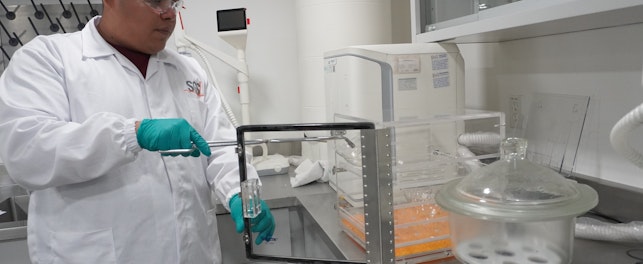A US survey of homeowners found 81% undertook a DIY project at the start of lockdown.1 Redecorating has been particularly popular as it is a relatively inexpensive way to revitalize a home. We look at what factors need to be considered when buying paint and see how manufacturers can ensure their customers are satisfied.
Lockdown has been an unusual experience for many people. The normal routine of get up, get ready, go to work, come home, eat, watch television, and sleep, suddenly stopped. Homeowners began to see their houses differently and, in many cases, they saw areas that could be improved. DIY stores reported significant increases in sales during the first three months of lockdown – France saw a 33% increase and UK and Ireland a 25.9% increase.2
A Fresh Coat of Paint
One simple way to improve a property is redecoration. While it can be fiddly and time consuming, it is economical, and the end result can be startling. A drab room is given a new lease of life with a fresh coat of paint.
The transformative nature of paint is just one of the reasons it continues to grow as a global market. The total global paint and coatings market, including industrial applications, is expected to grow annually by 4.92%, reaching a predicted USD 204.83 billion by 2023.3
Choosing the Right Paint
When choosing the ‘right’ paint, the consumer must ask themselves the following questions:
- What are you painting?
- What finish do you want?
- Where is the paint going to be used?
- What performance features do you need?
- What color?
This may seem counterintuitive, but most experts tell you not to start with the choice of color.4 Instead, it is better to consider where the paint will be used (externally or internally), what it will be applied to (wood, masonry or metal), and the finish (matt, gloss, satin, etc.). Finally, before considering color, the DIYer should think about where it will be used – bathroom paint must be water resistant and paint for a child’s bedroom should be tough and washable.
Paint Quality
Most customers never consider what constitutes ‘good quality’ in paint, but anyone who has ever bought ‘poor quality’ paint will know never to make that mistake again. Thin paint that requires multiple coats may seem like a good idea in order to obtain an intensive colour, but it can be very difficult to achieve an acceptable finish. A brand’s reputation can be permanently damaged if consumers know their products have less covering power or will not bond correctly with the surface.
Manufacturers must subject their paint products to comprehensive analysis to ensure conformity to the expectations of the customer. These tests need to be conducted under real-life conditions, against the wide variety of factors that consumers may reasonably expect from a paint product. For example, if the paint is advertised as being for the bathroom, it must be water resistant.
What tests a paint should be subjected to is broadly defined by the area of the home in which the paint will be used. For example, outdoor paints should be tested for:
- Application on the intended support
- Adhesion
- Age resistance
- Water permeability
- Rust resistance (metal paints)
- Beading
However, bathroom and kitchen paints should be assessed for:
- Application on the intended support
- Adhesion
- Gloss
- Opacity
- Washability
- Anti-condensation
- Water steam permeability
- Liquid resistance
- Fungal resistance
There is no such thing as a single type of paint. The manufacturer needs to consider a wide variety of factors to ensure the customer remains satisfied.
Safe Paints
Cost and performance may be the primary considerations for most consumers, but they should not be the only factors the manufacturer considers. Alongside solvent and pigment analysis, the manufacturer must ensure safety and conformity to relevant market regulations.Paints should also be assessed for the inclusion of hazardous substances – formaldehyde, volatile organic compounds (VOCs), heavy metals, etc. Test options include:
- Determination of solvent, pigment, additive and titanium dioxide
- Heavy metals identification
- Determination of formaldehyde
- Identification of hazardous substances for health and the environment
- Identification of VOC (according to ISO 11890-2)
- Identification of VOC emissions (according to ISO 16000)
- Ecotoxicity test, CMR research and determination
Consumers are also increasingly aware of the importance of choosing paints that do not release pollutants into the surrounding air during application. They want low emission levels to protect the occupants. Approval to the requirements of the EU Ecolabel will meet the needs of most concerned consumers. It demonstrates waste quantities have been limited, environmental risks reduced, and the discharge of toxic or polluting substances has been minimized.
SGS Solutions
SGS offers a comprehensive range of testing solutions to help paint manufacturers produce safe and compliant products for markets around the world. Testing solutions include determining content and emissions for heavy metals, formaldehyde, and VOCs. We also offer the full array of performance testing solutions to ensure customers are happy with the paint they buy.
In addition, we provide a wide range of performance testing services for paint tools and accessories. Just as customers wants good quality paint, they also want brushes that do not disintegrate during use and rollers that hold and release the acceptable amount of good quality paint.
Learn more about our services for DIY, tools and hardware.
Damien Berthe
International Business Development – Home Improvement & DIY
SGS Consumer and Retail Services
t: +33 (0)6 44 17 57 47
References
1 Millennial homeowners have done the most work around the house while stuck inside during lockdowns
2 Lockdown DIY boom saw sales of paint
3 Global Paints and Coatings Market Report 2019-2023
4 Tips for choosing the right paint color



